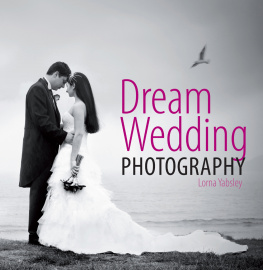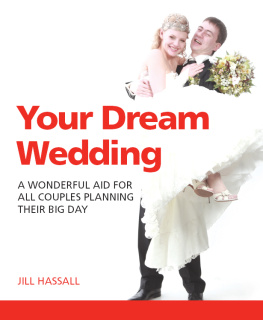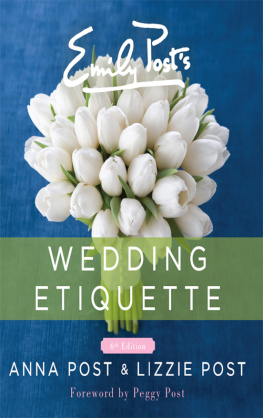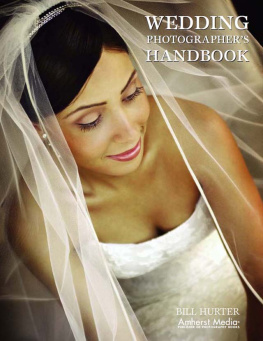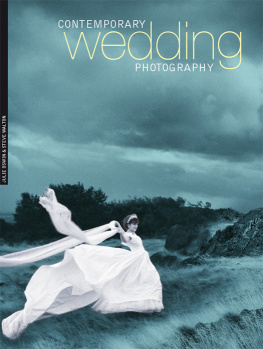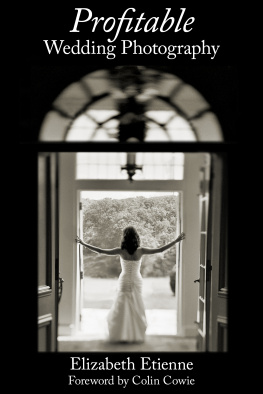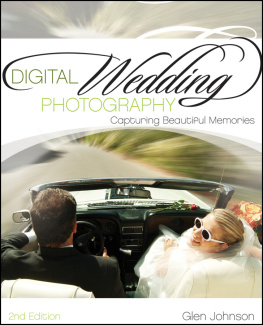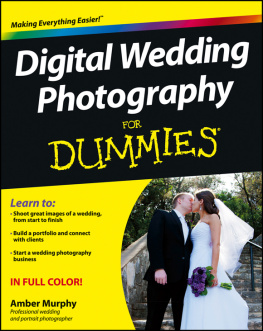Introduction
I am lucky enough to have worked in the photographic industry for some 25 years and over the last 17 of those I have established a successful wedding photography business with a solid reputation. I have seen radical changes during that time, not only with the advent of the digital camera but also in the way that market trends and the boom years have grown the wedding into a major industry in its own right.
When I first started out, in the days of film, the wedding market was very traditional. Photographers covered the set shots, generally cramming them all into an intensive, rather over-bearing, hour-long session, keeping everything very staged and formal.
Life for photographers was simpler then. The film (a fairly forgiving medium in terms of exposure latitude) would be posted off and the prints would be returned a week later. The best would be shown to the client for them to choose a set number of images that would be pasted into a finished album. Neither the photography nor the finished presentation was very inspiring, with little choice of albums and frames to offer clients. The whole image of wedding photography was considered rather dated and staid.
Times have changed, thankfully, and today there is a whole new generation of photographers working in a much more creative style, offering a great range of cleverly designed wedding albums and finished art works. Of course, we now have digital, too. People often remark how much easier it must be with digital. I have certainly found the freedom to take an endless number of shots and review them instantly has been incredibly liberating, and my knowledge and understanding accelerated one-hundred fold. But the down side is that we now have to do the job of the lab in the post-production and that is a whole new skill base that photographers must understand and equip themselves with.
Fortunately technology has progressed and the new generation of digital cameras and software has simplified our job. Doubts over quality are much less of an issue than in the early days of digital and the whole workflow process of post-production has improved greatly.
At my studio I have a glass display case containing a couple of old Bronica medium-format cameras. These former workhorses of many portrait and wedding photographers serve as a point of interest for my customers. I recently added to the display a first generation 1GB micro-drive at the time a huge investment in what seemed like a massive amount of data storage. Even though it is only six years old, in technical terms it is now obsolete and antique. How things have changed and so rapidly!
In this book we will be looking at the different types of wedding ceremonies and receptions, what happens throughout the day of a typical wedding and who the key people are. A full understanding of this is a crucial step towards successful wedding photography. We have all attended weddings as a guest but being there in the capacity of official photographer will require a very different perspective.
We will also look at the business of being a wedding photographer: how to market yourself, meeting a potential couple and securing a commission. Following on is the process of preparing for the big day, including writing the all-important plan, your blueprint for shooting successfully on the day.
In The Big Day section of the book there are many examples of my best work with a commentary on how they were achieved, ordered in the sequence of a typical wedding day. This will help give you some insight and, hopefully, inspiration on what shots can be attempted and how much there is to cover within a very small time frame under often challenging conditions.
In the final sections we will be looking at the post-production procedures, presenting to the client, producing the finished album and an in-depth look at shooting techniques, equipment and software. There is also advice on how to maximize your sales by offering additional shoots to the couple before and after their wedding day.
Understanding Weddings
Starting out
I had been running a photographic library and shooting studio portraits for some time when I was asked casually to cover a friend of a friends wedding. Knowing nothing about wedding photography and through more luck than judgement, I duly turned up at the wedding without any preconceived ideas and covered it from my own perspective. At this point in my development as a photographer, that was with a portraiture and editorial eye, far removed from the rather traditional approach of your average wedding photographer at the time.
I was there early so I captured the bride getting ready; I stayed late and covered the speeches. This technique is now familiar with all and is referred to as the reportage approach. I stumbled into it by accident but I soon recognized that there was a demand for this relaxed style and went on to promote myself as a wedding photographer.
Rising to the challenge
In the intervening years I have developed a working practice in line with the ever-changing market and technical advances. A lot of the early digital issues that concerned us have been resolved and now the biggest challenge facing a professional photographer is the competition from the growing number of people who have discovered a passion for photography through the digital medium. I cant say that my method is the only way, only that it is my way.
When I first went into this market seriously, I wanted to offer my clients a fresher approach than the staid and tired old style and at the same time deliver an unobtrusive, discreet service, and exceptional creative images. Even now, with a far more astute and savvy customer base, nine times out of ten the biggest concern for the couple is that the photography should not dominate proceedings and should be informal. This is a big demand and seemingly a contradiction in terms. How can you be unobtrusive and quick but still achieve the shots that most modern couples now aspire to? I have based my entire reputation on fulfilling that role.
My advice to the budding photographer entering into the world of weddings is that first and foremost you need an instinctive natural eye for composition, which will develop and mature over time. A basic knowledge of photography and post-production techniques is vital. You must understand your camera settings and be the one in control of exposures and composition. It is not enough to turn the dial to auto and snap away in the hope that you will capture it all.
Having said that, you dont have to be a technical master. I can drive a car but I have no idea about how the internal combustion engine works. Neither is it about having a huge range of equipment. A very well-known photographer, once said to me, If you cant take a successful image with a standard 50mm lens, give up. Harsh, but the point is that a lot of peoples interest in photography is about the shiny and beautifully engineered cameras and gadgets. Personally, I find that bit the least interesting. It has to be about the images you create at the point of pressing the shutter, not the gear in the first instance nor the software tools in post-production. Understanding what you are trying to achieve at that point is what really good photography is all about.
No matter what your motivation, realistically you need to have at least some level of competence before tackling anything as challenging as a wedding. Its a huge responsibility; know your limits and only ever offer what you feel confident you can deliver.


